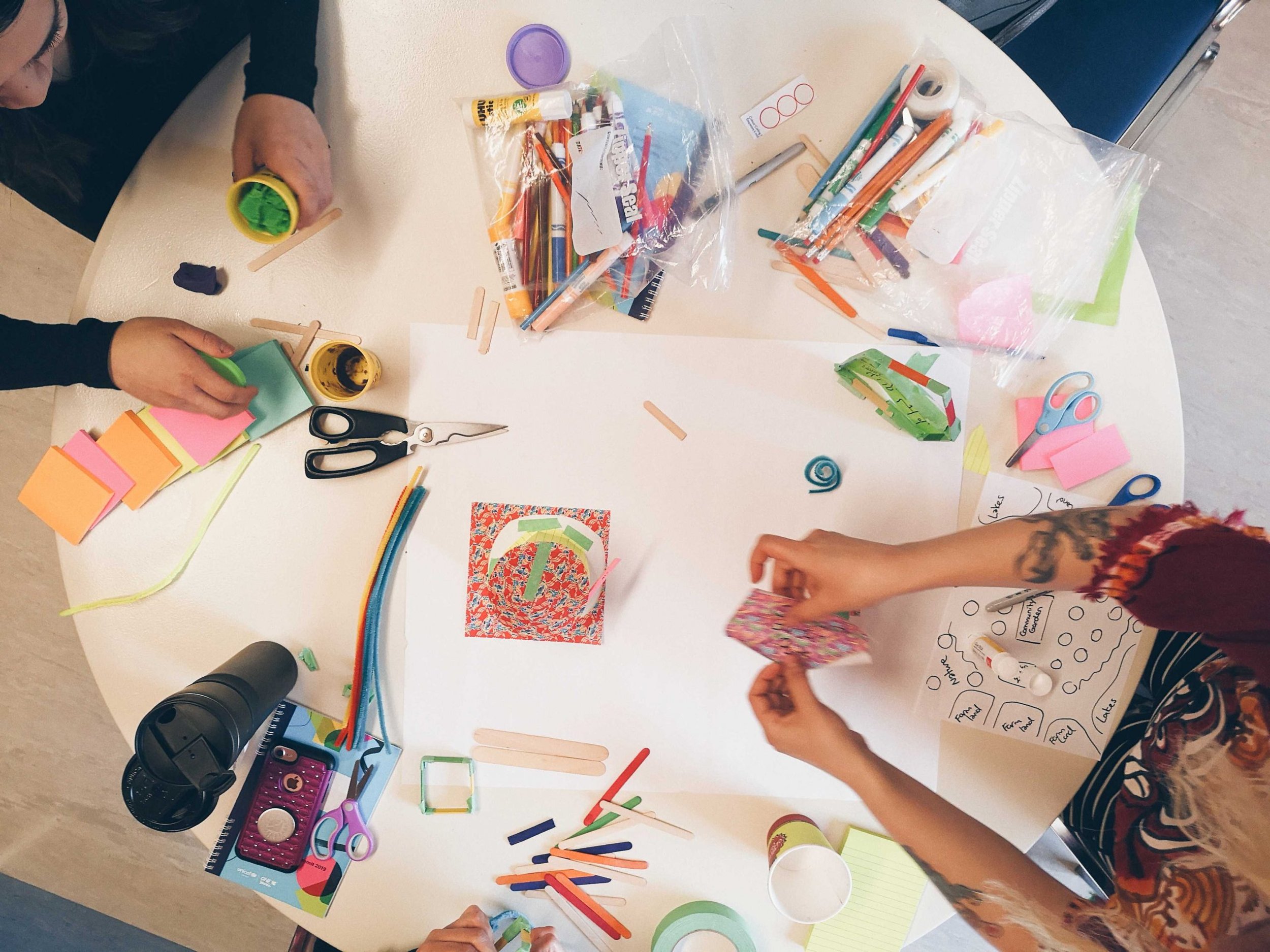3 Tips for your Best Prototyping Yet
Wait, what is prototyping again?
A prototype is an object or artifact of an idea that someone can touch, hold, see, or interact with in some way so that they can offer feedback. When we have an idea, building a prototype give us a way to share it with others, work out the practical details and learn about what does and doesn’t work. It becomes a way to visualize learning and decision making.
We don’t only prototype “things”. We can also prototype concepts, spaces, messages, interactions, experiences, and roles. Learn more about prototyping and how to use it here.
Prototyping becomes a less risky way to solve problems. Before investing heavily in an idea, start with a prototype and learn more about possible solutions.
Follow these three tips to make your prototyping more effective, more creative, and less risky!
1. One prototype cannot do everything
Create one prototype at a time for each property of an idea. When using simple materials to prototype, it’s hard to communicate many things at once. So pick one thing to feature first. Testers can give more specific feedback when design features are simpler and more visible to them.
Example: When Palm was testing their PalmPilot (a precursor to the smartphone) they had people carry around a block of wood. There wasn’t much on the block, but that prototype gave people an idea of the size and shape of a PalmPilot and allowed them to test the physical nature of the device, something new for people to carry around, specifically.
Caption: This is a highly effective prototype because it is so simple.
2. Don’t Refine too Early
Prototypes aren’t your final product. They’re a tool to learn and really just a way to further your research about an idea. While it’s tempting to want to share something new and shiny with people, keeping prototypes lo-fi (low-fidelity = quick and rough) for a while can speed things up later. There are three main reasons for this:
When prototypes look too “final”, testers feel like there’s less room for change and then give less feedback. They’ll focus their feedback on specific details, without questioning the overall concept and format of the idea.
People can often get distracted with the refined details before they’ve tested a broader concept and really understood how it works as a solution. A prototype lets them try the concept and proactively suggest those details for the next version.
Using simpler methods or materials will take less time and likely cost less than more production-heavy prototypes.
Example: Imagine playing the game Pictionary, with one team using pen and paper and the other using digital design software. By the time each team’s time is up, the pen and paper team would win. Every time. Simpler methods are faster and more flexible to communicating and making changes!
Caption: Paper and pen is simple and flexible.
3. There’s no one right way to prototype
As long as you’re making something and learning from it, you’re doing it. Some people prefer planning and chatting it through a bit first, some get right to assembly. Some people prefer to build with their hands, others might prefer to draw. It takes practice to find out which way your brain works and what styles of prototyping are best for you.
Here are a few guidelines we use to help ourselves avoid thinking about getting it “right or wrong” when prototyping:
Say yes.
Be kind. (To others and yourself … we’re our own worst critics)
Just blurt it out. (Try a free association activity)
Edit later. (That’s what testing is for)
Example: Let’s say an idea is to create a new training course. To prototype, some people might start by drawing an advertisement describing the course, others might role play the course delivery, others might wireframe some online course components. All of these are a great way to flesh out this idea and share it with others.
Caption: Lots of materials encourage lots of ways to build prototypes.
These three tips are Overlap standards for making sure prototyping is effective and efficient. Give them a try with your next idea!
Got your prototypes ready to share? Click here for an awesome tool to gather feedback from your testers!



